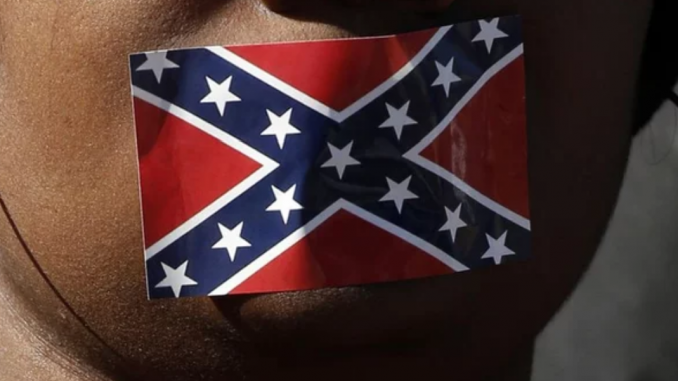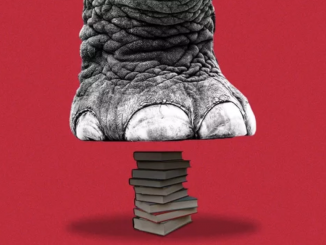
The Kentucky Division of the United Daughters of the Confederacy filed a lawsuit Tuesday seeking an injunction barring the removal of a Confederate memorial located outside a courthouse in Owensboro.
Filed in Kentucky state court, the lawsuit aims to ensure the Confederate Monument in Owensboro remains on the lawn of the Daviess County Courthouse where it has been situated for more than a century.
The Daviess County Fiscal Court voted last year to move the monument – a bronze sculpture of a Confederate soldier on top of a granite pedestal – and create a committee to recommend where to put it.
“TO OUR CONFEDERATE HEROES,” reads an inscription on the pedestal, which also bears the logo of the United Daughters of the Confederacy, a hereditary group consisting of descendants of Confederates.
Nicholas P. Goetz, a lawyer for the Kentucky Division of the United Daughters of the Confederacy, maintains the monument belongs to his clients and that relocating it would infringe on their rights.
In a six-page complaint, Mr. Goetz said the Daviess County Fiscal Court “granted a license” to the Daviess County Confederate Associate in 1893 that allowed the group to erect the memorial.
At the time, he wrote, a coalition of groups, including a local chapter of the future United Daughters of the Confederacy, successfully fundraised $3,500 in order to have the monument created.
The memorial was subsequently dedicated in 1900, around 35 years since the Civil War resulted in the defeat of the Confederacy and its failed effort to perpetuate slavery.
When the main group that led the fundraising effort ceased to exist in 1970, Mr. Goetz argues that its assets, including the Confederate memorial, accordingly became the property of the plaintiff.
More recently, the Daviess County Fiscal Court voted in August to remove and eventually relocate the monument, although it remains standing on the courthouse lawn while its future home is found.
The commission set up to help determine where to relocate the monument announced in November that it recommended moving the statue to either of two museums in Owensboro, both owned by the city.
Owensboro Mayor Tom Watson, a Republican, said last month the city opposes moving the statue to either property “where it’s still in public view,” however, the local Messenger-Inquirer reported then.
The lawsuit, first reported by the Messenger-Inquirer on Tuesday, names as defendants the four elected members of the Daviess County Fiscal Court, who together serve as the county’s governing body.
It requests an injunction preventing the county from permanently relocating the monument, as well as a court order directing its return to the plaintiff and for defendants to pay its legal fees.
“Any action by the Daviess County Fiscal Court that seeks to limit and or restrict the ability of the Kentucky Division UDC to move or relocate the Owensboro Confederate Memorial within the Owensboro city limits may violate the First and Fifth Amendments of the Constitution,” in addition to state law, Mr. Goetz alleges in the lawsuit.
A message requesting comment from the Daviess County Fiscal Court was not immediately answered. County Attorney Claud Ported disputed the plaintiffs own the property, the Messenger-Inquirer reported.
“We have several documents showing they don’t own it,” Mr. Porter said, according to the newspaper.
A hearing in the case has been scheduled for May 11.
Confederate monuments across the U.S. have come down since last summer amid a nationwide reckoning over racial injustice sparked by the murder of George Floyd in Minneapolis, Minnesota, last May.
Floyd, a Black man, died after being pinned to the ground by a White police officer, Derek Chauvin, who was later fired from the force and ultimately found guilty this week of murder and manslaughter.
A total of 168 Confederate symbols, including 94 monuments, were removed from public view in 2020, the Southern Poverty Law Center said in February, including 167 removed following Floyd’s death.
*story by The Washington Times


